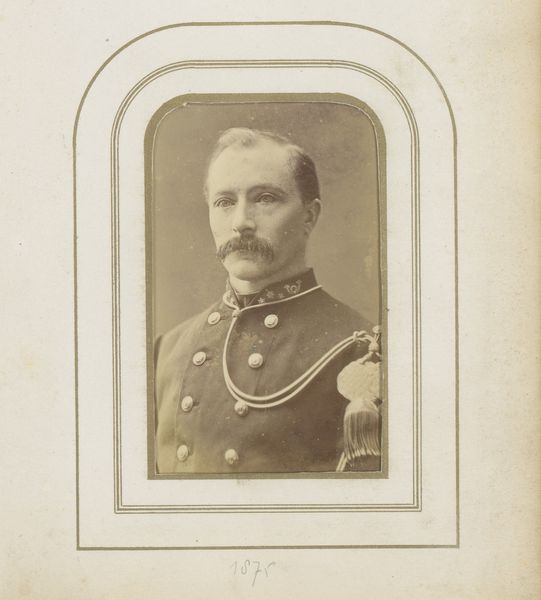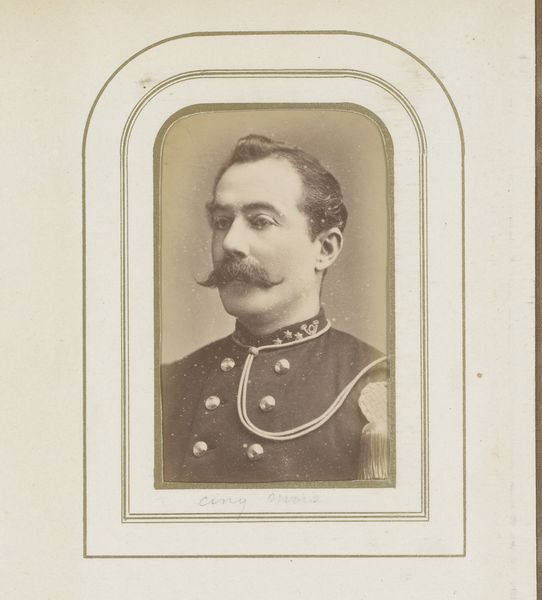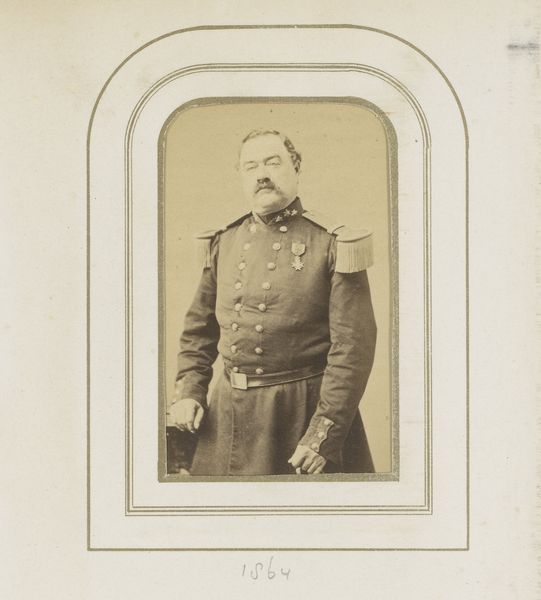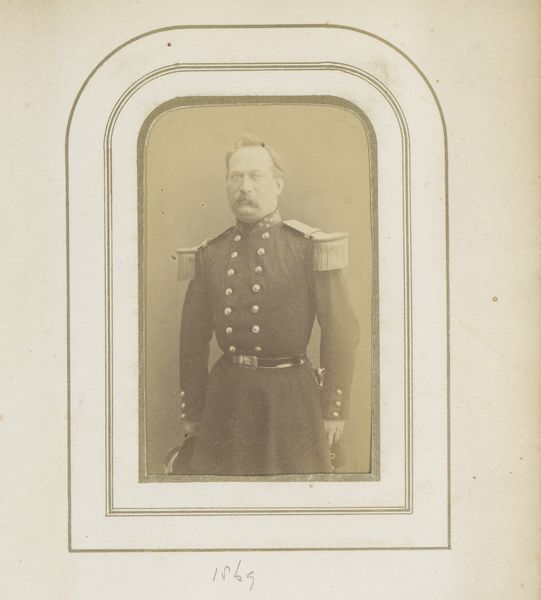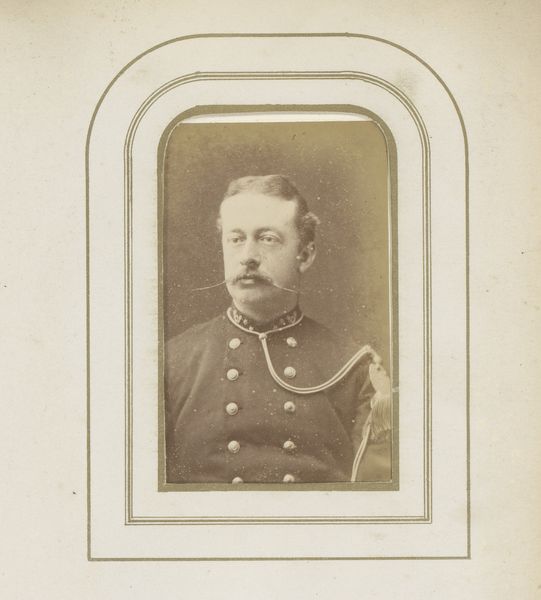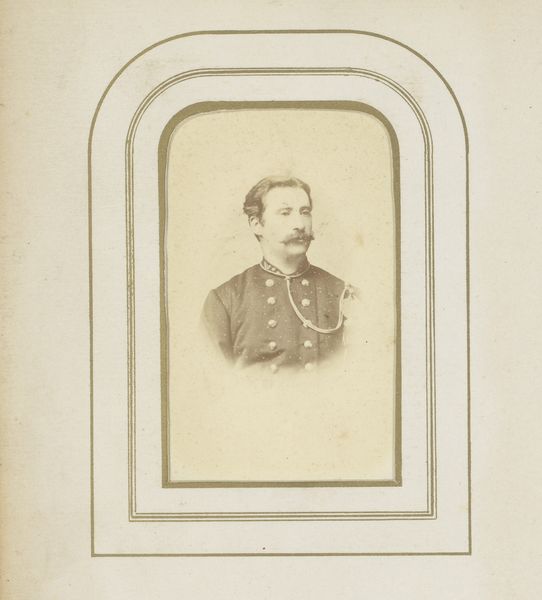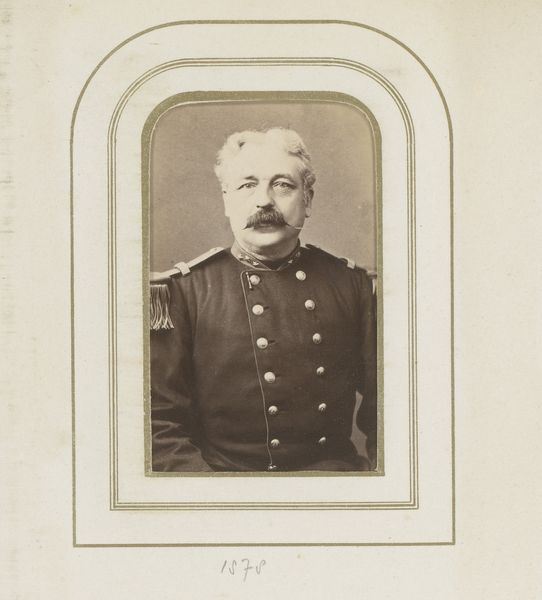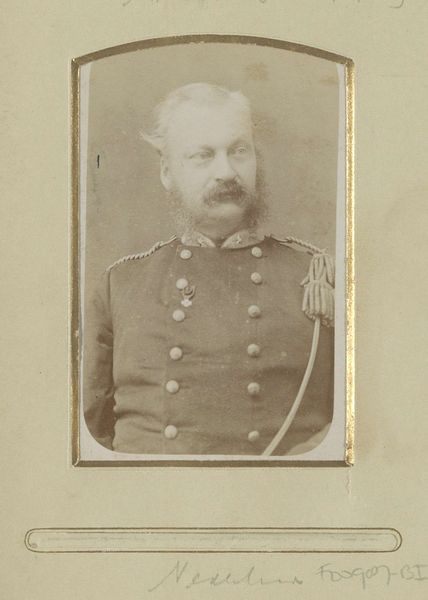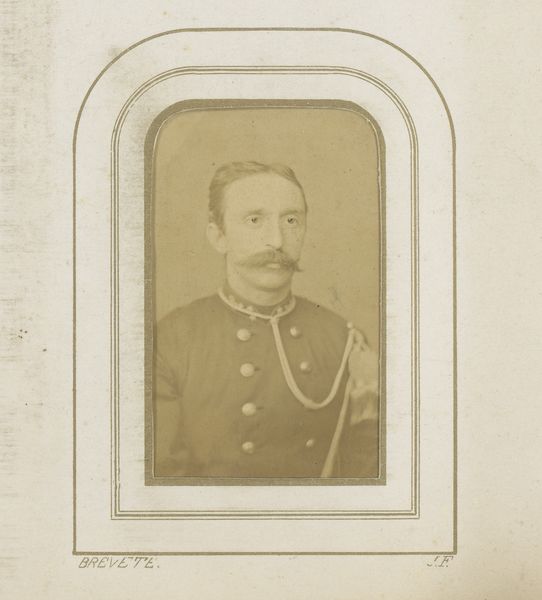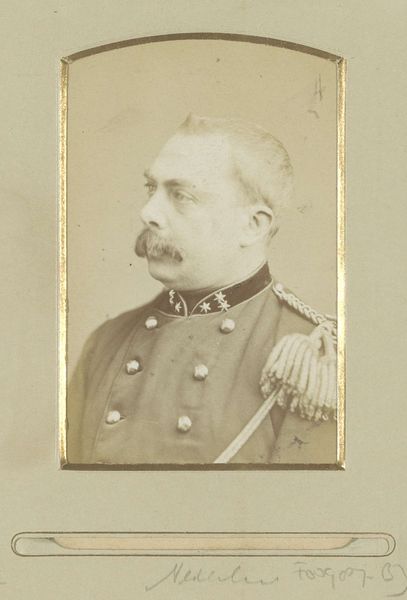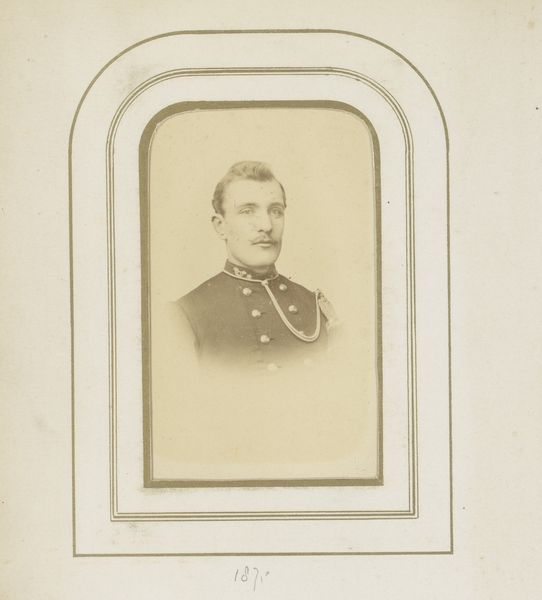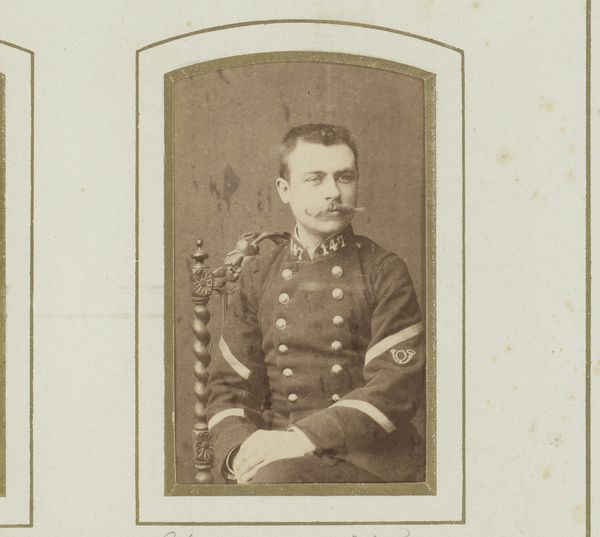
Dimensions: height 83 mm, width 50 mm
Copyright: Rijks Museum: Open Domain
Editor: Here we have Guillaume Günther's "Portret van een man met snor in uniform," or "Portrait of a Man with a Mustache in Uniform," created in 1876, using the gelatin-silver print method of photography. There's a stillness to this work, and something about the almost staged look and precise detail. What strikes you about this piece? Curator: Well, seeing a gelatin-silver print from 1876 immediately directs my thinking toward the means of production. How did the rising industrialization affect photographic processes? Were these portraits becoming more accessible, less specialized in terms of labor? How does that affect social representation? Editor: That's fascinating. It really wasn't that long ago that photography was still a rather laborious chemical process. It must have shifted from a craft to an industry fairly quickly, perhaps? Curator: Precisely! This also speaks to the sitters. How aware was this man in uniform, this subject of portraiture, of his place within a quickly mechanizing mode of image production? Does the image become democratized or is it still serving the status of the upper classes, the military, or a budding middle class? Editor: Interesting that photography, especially portraiture, would function as a potential leveler in some social contexts but not others, given that you still need to *pay* someone to make your portrait. Is there also something about photography's supposedly truthful qualities playing into social performance? Curator: That's very insightful. I'm struck by the way the materiality – gelatin and silver – becomes a battleground in its own right, challenging traditional artistic materials, such as paint, within the fine arts hierarchy. What do you make of this challenge to traditional fine arts? Editor: I didn't see it that way at first, but I can see it now; photography as a social artifact making claims on our historical record through material production itself. It becomes a very physical claim. Curator: Yes, absolutely!
Comments
No comments
Be the first to comment and join the conversation on the ultimate creative platform.

